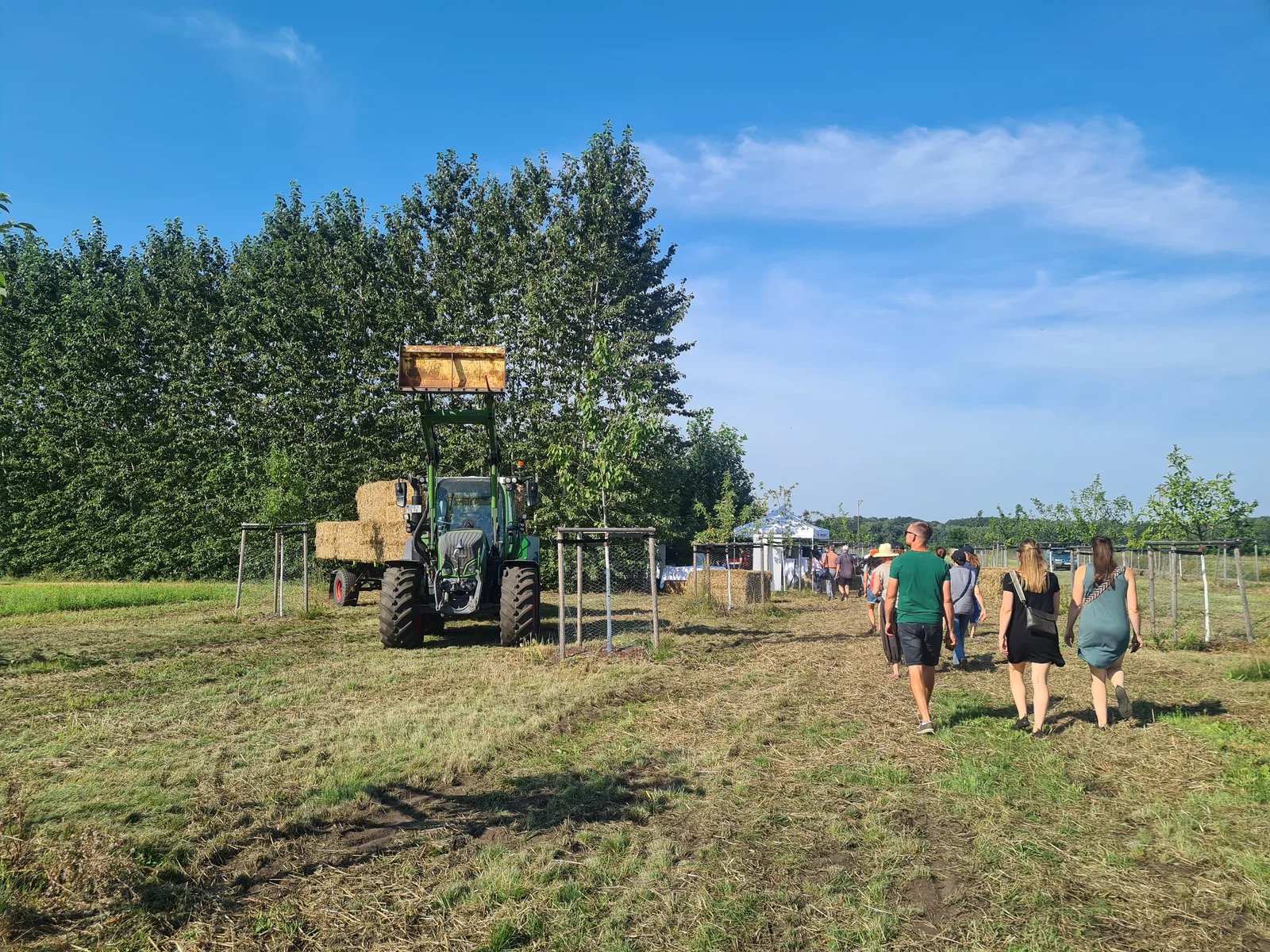First agroforestry bread hits the shops
For three weeks, eggs and bread produced using regional agroforestry methods will be on sale at various locations in Lusatia as part of the "...better with trees!" marketing campaign. The AgroWert-Regio project team wants to inform consumers about agroforestry - a combination of agriculture and woody plants - and make products from it visible.

The marketing campaign will take place from Monday, 18 November to Saturday, 7 December 2024. An agroforestry bread, made from champagne rye from the Domin farm (Peickwitz) and baked by the Wahn bakery (Vetschau), as well as free-range eggs from agroforestry areas of the Schulz farm (Atterwasch), the Domin farm and ZGJ Landwirtschafts GmbH (Calau) will be on offer. The products of the marketing campaign can be recognised by a newly developed Agroforst logo. The Agroforst products are sold at the Wahn bakery, the farm shop of the Domin farm in Peickwitz and the Landwarenhaus in Groß Beuchow. Talks are being held with other marketing partners. The Eberswalde University for Sustainable Development (HNEE) is scientifically supporting the three-week marketing campaign with an on-site consumer survey. "We want to find out what consumers already know about agroforestry, whether they are prepared to spend more money on it and if so, why," says Julia Ehrich from HNE Eberswalde.
What is agroforestry?
Agroforestry is the targeted planting and cultivation of trees and shrubs on fields and meadows, resulting in multiple utilisation with many benefits: The woody plants reduce water and wind erosion, which jeopardises agricultural use, especially in Lusatia with its sandy soils. In addition, the wooded strips provide a refuge for various animal and plant species and thus contribute to greater biodiversity on the land. Another advantage of agroforestry systems is the diversification of farms. Woody strips provide additional products such as fruit, nuts, energy and valuable timber. However, the planting, establishment and maintenance of agroforestry systems initially means additional costs and increased labour costs for the farms. These challenges, together with low subsidies, mean that agroforestry in Germany is still a niche market. There are no exact figures, as many agroforestry areas are not recorded as such in the statistics of the agricultural offices. The German Agroforestry Association (DeFAF) e.V. lists 162 agroforestry areas across Germany with a total of 1,304 hectares on its agroforestry map, on which farms can voluntarily register after a cross-check (as of 31 December 2023).
More about the AgroWert-Regio project
The AgroWert-Regio project, a joint project of DeFAF e.V., HNE Eberswalde, Spreewaldverein e.V. and the practice partners Bäckerei Wahn and Landwirtschaftsbetrieb Domin, is concerned with the economic perspectives of agroforestry systems, specifically the valorisation of agroforestry products. The project team hopes that the temporary marketing campaign will provide new insights into research on consumer preferences, but also more visibility for products from agroforestry systems. Lusatia, with its agricultural and demographic characteristics, serves as a model region for the marketing of agroforestry products. The project is funded by the Federal Ministry of Education and Research (BMBF) as part of the "WIR! - Wandel durch Innovation in der Region" programme and the WIR! alliance "Land-Innovation-Lausitz".
Note on image material
The photos available here may be used for reporting purposes. Please note the copyright notice © HNEE / Julia Ehrich